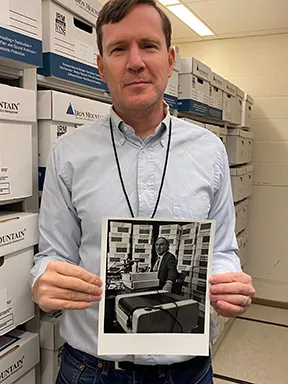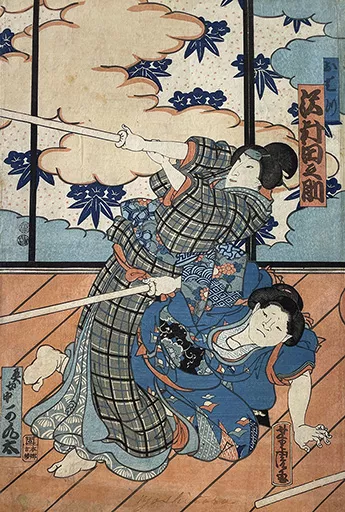Managing Special Collections
Here, we highlight the unseen labor that goes into the management of special collections.
A Case Study in Iterative Processing of Existing Collections
The papers of the College’s fifth president, Harris Wofford, have been open for research at the College since 2012, and an additional gift of some 50 boxes of papers arrived in 2019. They are one of our largest archival collections, occupying about 400 linear feet of shelf space.
The collection is a rich resource, tracing most of Wofford’s adult life, which he spent as a civil rights activist; advisor to Martin Luther King, Jr., and John F. Kennedy; and as Pennsylvania’s U.S. Senator from 1991 to 1994.
The papers include his founding of a national student organization that advocated for a world government in the late 1940s, his involvement with the Peace Corps during the Kennedy administration, his service as Pennsylvania’s Secretary of Labor and Industry in the 1980s, and his role in creating and leading AmeriCorps in the 1990s. The papers are an especially strong record of his work in the U.S. Senate and his two election campaigns.
Until the department hired part-time archivist Sahr Conway-Lanz (pictured at right, with a photograph of Wofford) this year, the collection had been only minimally processed. Over half of the material described in the collection’s finding aid was listed as “miscellaneous” or had only been given a date without any title or contextualizing information. The later 2019 addition had no finding aid at all.
This redescription project will enhance access to the papers by creating a more detailed finding aid, which greatly improves the possibility of discovering material that is relevant to researchers, especially off-campus researchers who are relying on digital finding aids to determine the importance of an in-person visit.
The work of this project will also ensure better preservation of this invaluable historical resource, placing fragile records and photographs in archival quality housing rather than the folders and boxes the material originally came in. You can view the work-in-process finding aid for the Harris Wofford Papers online and watch it evolve: archives.tricolib.brynmawr.edu/resources/bmc-m93
A Case Study in Accessioning New Donations
Last summer, S. Kathleen Doster ’78 added over 500 Japanese prints and illustrated books from the 19th and early 20th centuries to Special Collections. Her collection is valuable for the quality of the prints, the many prominent artists represented, as well as for the multiple versions or “states” of prints, which illustrate variations that can occur in the process of inking multiple blocks to complete a single print and enrich the teaching of print technology and aesthetics.
A cross-cultural donation like this, however, presents our small department with a complex cataloging project for several reasons: the text on the prints is written with Japanese kanji and kana characters, many of the best bibliographic sources and largest online collections are written in Japanese, and our current staff members do not read Japanese.
Matching faculty or students with language skills to this kind of work is sometimes possible but delays how quickly we can make collections available for use in teaching and research.
Helpfully, Doster also donated copies of her own collection records, which include artist names and titles transliterated into English, as well as provenance information and lists of comparable items in other collections.
Despite this, staff members cataloging collections must be diligent about vetting the information that they input into the collections database. Researching each print requires an enormous investment of time to locate additional comparanda by poring over photographs on various ukiyo-e databases or through Google’s reverse image-search function, and then looking closely for very subtle differentiations. Once a source is located, we determine its reliability.
Additional challenges are true of any print identification. Is this part of a later edition? Was this made “after” or in the style of another artist? Is this part of a diptych, triptych, pentaptych, or other series? What is the subject matter, and does it reference a story or history outside of the cataloguer’s knowledge? The answers (or lack thereof) to these questions affects what we can reliably represent about these works and how we can categorize and keyword them. This, in turn, impacts their discoverability by potential users of the collection.
This is why the cataloguing of collections is an iterative process; records will be improved across time as resources improve and employee skill sets change. The database is never complete, and we benefit from your participation in the improvement of its records as well. Please let us know when you encounter errors or gaps of knowledge in what is represented in the collections.
Published on: 06/02/2023

